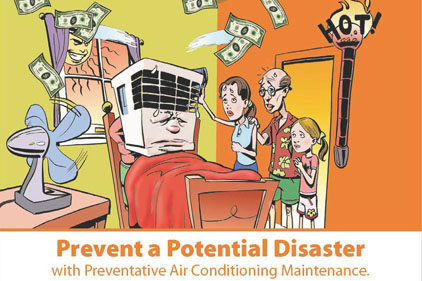At this point, we don’t need to go into all the nuances of a fully optimized and integrated marketing campaign. For now, all you need to know are the fundamentals, which I call “The Big Three.” The Big Three are Size, Design, and List. And when you get these three facets of postcard marketing right, you’ll start seeing big results right away. (For all the data you can download my postcard marketing book.)
When you master The Big Three, you have the foundation of a winning marketing strategy to consistently grow your business. As you get more experienced you can fine tune your efforts to get the absolute maximum revenue generation from your marketing.
Let’s dive right in to The Big Three...
Size
“What size postcard do I need?”
“Can I get away with a smaller card?”
“What is the benefit of a bigger card anyway?”
Choosing the size of your postcard is such a critical decision to make, because it directly affects your campaign’s success. Among all the different variables that go into marketing, engaging prospects’ attention is right at the top in terms of importance. The bigger the card, the easier it is to see. We can disagree on a lot of things in marketing, but we can all agree on that. Am I right? There are some industries that are more competitive than others. For businesses in those industries, a bigger card may be necessary to get noticed in the mailbox.
Many direct mail companies offer a variety of sizes for their clients to choose from. If you’re considering a company, and they don’t offer several sizes, stop considering and find one that does. Usually the options look something like this: small (4x6), medium (5x8), and large (6x11). The names may vary, of course.
Not sure what size you need? Answer these questions to find out:
1. How much do other companies in your industry market?
a. Not at all/I’m the only one (You can lean towards a smaller card)
b. Light to moderate amount (Lean toward a larger card)
c. Moderate to heavy amount (You need a large card)
2. Do your competitors also mail postcards?
a. No (You can lean towards a smaller card)
b. Yes (You need a large card)
3. How much explaining does your offer require?
a. Not that much/easy to grasp (Smaller card is fine)
b. A little background info (Medium should do the trick)
c. A lot/details are important (Go big or go home)
The next two sections mean nothing if your card gets ignored or missed in the mailbox. You’ve got to get their attention to turn them into a lead.
Design
Once you get their attention, the design of your card needs to engage your prospects’ interest. You’ll be competing with bills, letters, and possibly other marketing postcards, so your card needs to be designed specifically to take the attention your card gets and turn it into genuine intrigue.
Here are the 10 elements every marketing postcard needs to be successful:
1. Clear headline
2. Supporting graphic
3. Color that pops
4. Intriguing sub-headings on the back that lead into benefits
5. Benefits
6. Enticing offer
7. Business name and logo
8. Call to action and/or expiration date for the offer
9. Contact information — website, map, phone number
10. Return address
Elements 1-3 are about keeping your prospects’ attention and sparking their interest. Choosing the right size gets your card noticed, but it won’t get a second glance if your first three elements are weak. In Elements 4-6 you take the customer from interested to intrigued. Your compelling sub-headings lead into your body copy, which you fill with the benefits of your product or service. Then, you hit them with an offer that is just too good to pass up. Elements 7-10 are the closers. Now that the prospect is intrigued and ready to take you up on your offer, they need to be able to contact you. You need to give them every piece of contact information you have, so they have several options to get in contact with you. Then comes one of the most important elements: the call to action. This is so important to include, because people are busy. Unless you tell exactly what they need to do, they’ll simply do nothing.
When you’ve nailed the size and design of your card, it’s time to mail it. But who do you send it to?
List
When it comes to The Big Three, last is certainly not least. The mailing list is the most important of The Big Three. You could choose the right sized postcard, and design it with perfection, but it won’t get a single response unless you mail it to the right prospects. You simply cannot afford to get the list wrong. Creating an effective mailing list hinges on finding your “ideal prospect.” Does your business serve female homeowners between the ages of 25-55? Maybe your ideal prospects are young families with an income over $125,000. Once you find out which demographics are most in need of your services, you can choose a list comprised of those individuals. You can get extremely specific with your targeting, too. You can target households worth over $200,000, whose residents’ collective income is over $150,000. Or maybe male homeowners between the ages of 30-65, who make over $100,000 a year. You see my point. The more specifically you can target your prospects, the more relevant you can make your postcard for that particular group. The more relevant you can make your marketing, the more effective it is.
See what has worked for other HVAC companies by downloading a report with HVAC postcard samples.
Publication date: 5/6/2013


Report Abusive Comment